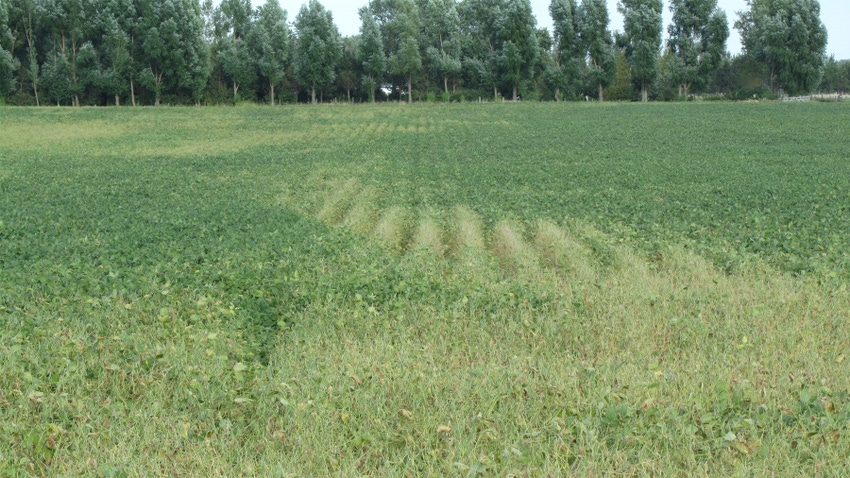February 16, 2024

by Ed Zaworski and Daren Mueller
Soybean sudden death syndrome is an economically significant soybean disease in the Midwest. SDS gets its name from the mid- to late-season interveinal chlorosis and subsequent leaf drop. Unlike many other foliar soybean diseases, nothing can be done to help the affected crop in the current year once symptoms are noticed.
Fusarium virguliforme is the fungal pathogen behind the well-known symptoms of SDS. The lesser-known portion of this disease cycle is the root infection that occurs during a cool, wet spring. While rot can account for some root damage caused by this disease, most of the plant damage is due to toxins produced by Fv. These toxins are what cause the damaging late-season foliar symptoms and leaf drop.
As with any plant pathogen, take an integrative management approach by using cultural practices, variety resistance and seed treatments. Your first line of defense should be scouting and knowing your field history.
Essentially, if you have had problems with SDS in the past, it’s a good idea to be ready to manage it. The major pitfall here is confirming that the problem is indeed SDS and not one of the many look-a-like issues, caused by other pathogens, nutrient deficiencies or chemical applications. If you need help confirming SDS, seek out agronomists from the private sector and Iowa State University. The ISU plant and insect diagnostic clinic is another resource specifically geared toward helping you identify and manage plant diseases.

CONCERNING CHLOROSIS. Foliar interveinal chlorosis is a classic symptom SDS. By the time such symptoms surface, it is too late for treatment in the current year.
If you ask any plant pathologist about managing a plant disease, their first response will likely be to use resistant varieties when available. However, in the case of Fv and many other plant pathogens, the resistance may only reduce the disease, not eliminate it.
Seed treatments
When variety resistance doesn’t provide adequate control, fungicide seed treatments can be integral in managing root diseases such as SDS. Seed treatments prevent root infection in the spring when environmental conditions may be right for Fv.
Several products are labeled for control of Fv. You can view product ratings for control of Fv and many other root pathogens at the Crop Protection Network. The What’s on Your Seed publication from the University of Wisconsin-Madison Nutrient Pest Management Program is also helpful in determining what products use specific active ingredients.
Two products have consistently been rated as having very good control of SDS: BASF’s Ilevo and Syngenta’s Saltro. The North Central Soybean Research Program conducted a study between 2021 and 2023 across 14 locations in nine U.S. states and in Canada.
The findings showed that in many cases, soybean seeds treated with Saltro or Ilevo, both alone and in combination with other seed treatments, protected yield. In some cases, the two products also reduced the overall disease severity of SDS. However, like variety resistance, it will not eliminate a disease.
Zaworksi and Mueller are Iowa State University plant pathologists.
You May Also Like




